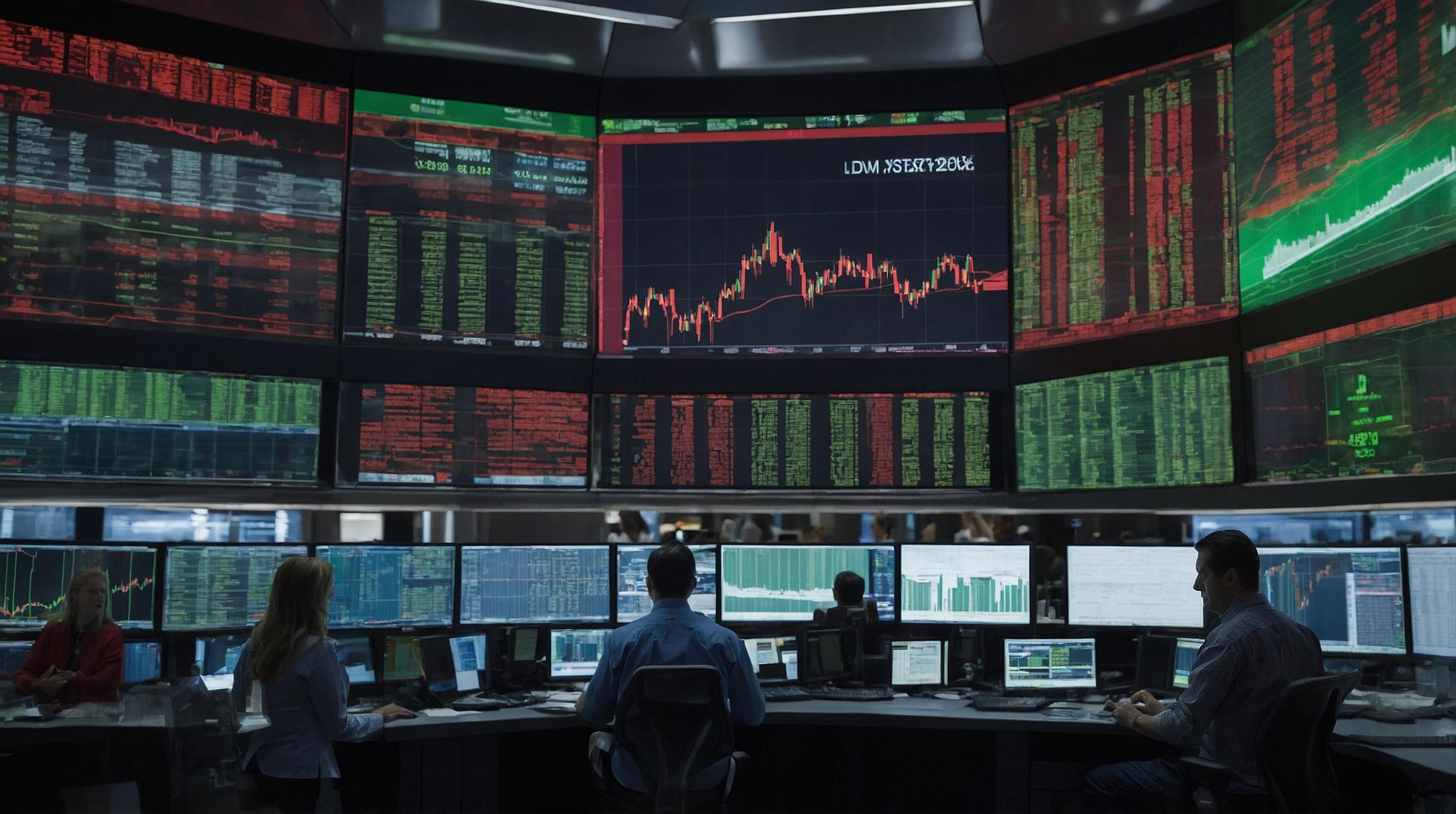Bond Taxes Drive Investors towards Stocks
In 2022, the bond market took a hit and saw prices tank as the Federal Reserve hiked interest rates, leading to higher bond yields. As a result, investors flocked to Treasury securities, drawn by yields above 5%. However, what many investors failed to consider were the hidden costs of investing in bonds: taxes. Unlike equities, which are subject to capital gains taxes, Treasury coupon payments are taxed differently, with top earners facing up to 37% in taxes. This unexpected tax bill for bond investors could potentially drive them back to stocks. Municipal bonds, which don’t require bondholders to pay state or federal taxes, will likely be an attractive alternative for many investors.
Businesses Thrive despite High Interest Rates
In 2023, the market predicted that businesses would suffer as interest rates rose. However, despite the increase, corporate bankruptcies remained near record lows, and interest expenses accounted for only 7% of corporate profits. This suggests that businesses were able to withstand the higher rates without a surge in bankruptcies. This positive outcome can be attributed to various factors, including corporate debt burdens, high cash reserves, and profit buffers. Additionally, the availability of private credit dry powder further supported businesses during this period. As a result, “Prudent Yield” assets, such as corporate bonds and senior loans for fallen angels, which are companies downgraded to junk but may avoid bankruptcy, became favorable investment options.
IPOs Set for a Comeback in 2024
In 2023, the restrictions imposed by higher interest rates led to a lack of companies going public. However, this trend is expected to reverse in 2024 if the Federal Reserve cuts rates as anticipated. The reduced cost of financing could open the floodgates for private companies to go public. Venture capital funds in the technology sector, which have faced two challenging years, are seeking exits, while high-burn companies need cash and may see IPOs as a preferable option to raise capital at a higher valuation. This resurgence of IPOs will benefit large banks and exchanges as they underwrite the offerings and stand to profit from successful public offerings. The SPDR S&P Bank ETF (KBE) will likely experience bullish sentiment due to the increased volume of IPOs.
Japan’s Stock Market Outperforms Expectations
Japan’s stock market, stagnant for the past four decades, experienced a remarkable 28% gain in 2023, outperforming the S&P 500. However, Japanese equity valuations remain significantly lower than their US counterparts, making them an attractive investment option. The Japanese economy’s resilience, undervaluation, and increasing productivity contribute to this favorable market outlook. Investors looking to capitalize on Japan’s stock market can consider investing in the Wisdomtree Japan Hedged Equity Fund (DXJ) or the Ishares MSCI Japan ETF (EWJ) for broader exposure to Japanese equities.
Geopolitical Risk Hits Tech Giants
The Magnificent Seven, referring to tech leaders like Apple, Amazon, Google, and NVIDIA, who witnessed a surge in market cap and importance in the S&P 500, may face challenges in 2024. These companies heavily depend on Taiwanese manufacturers for over 90% of their chips, making them vulnerable to geopolitical tensions. The over-centralization of semiconductor manufacturing capabilities in Taiwan poses a significant risk, as tensions in the region continue to mount. Consequently, there is an expectation that these risks will be priced into the market, particularly affecting mega-cap growth stocks. However, equal-weighted equity indexes that don’t heavily rely on tech stocks and baskets of investments excluding tech stocks should benefit from this re-evaluation of risks.
Biotech & Pharma Poised for Record Highs
The healthcare sector’s performance in 2023 was middling compared to the rest of the market. Nevertheless, this has created an opportunity for investors, as valuations in the pharma and biotech sectors now appear promising. The focus in 2024 is expected to shift to Alzheimer’s treatment, with seven vaccines in trials and ongoing tests on diabetes drugs as potential treatments for the disease. Furthermore, drug discovery through molecular simulation using artificial intelligence shows immense potential. Recommended stocks in the healthcare sector include Eli Lilly and Merck. The iShares U.S. Pharmaceuticals ETF (IHE) provides exposure to pharmaceutical stocks for interested investors.
Investors Get Pragmatic About Energy
The high cost of wind and solar power has led to a reevaluation of clean energy investments. Wind and solar stocks have taken a hit as project economics proved unworkable, with wind and solar costs being significantly higher than natural gas and nuclear power. Investor pragmatism regarding energy policy may reward natural resource companies and lead to multiple expansions for oil and gas and mining firms, as they currently trade at 10x and 13x earnings, respectively. In contrast, the S&P 500 and “clean energy” ETFs trade at 21-22x earnings. With investor sentiment shifting toward a “physics over politics” view of energy policy, companies in the oil, natural gas, coal, and nuclear power industries may experience positive market performance.
One Path to 2% Inflation, One Hundred Paths to 5%
Inflation is a key concern for the market, with the Federal Reserve aiming to keep it under 2%. However, current inflation levels are hovering around 3.4%. Numerous disruptions can contribute to higher inflation, including geopolitical tensions affecting container trade, potentially increasing container prices. Additionally, the war between Israel and Hamas and its potential spillover effects on Lebanon, coupled with Black Sea grain deals hanging by a thread and bad weather stemming from El Nino, could drive up food prices. The rising federal employee wages and housing starts also contribute to inflationary pressures. Despite investor optimism, the Fed’s preferred metrics for measuring inflation remain below the target of 2%. Given these factors, there are concerns that inflation may rise higher than expected in 2024.
Government Debt Buyers Demand a Premium
With the US government’s debt exceeding $34 trillion, interest payments are set to rise from just over $450 billion in 2022 to $1.4 trillion by 2033. Investors may demand higher bond yields before purchasing Treasury securities due to growing alarm over the mounting interest payments. A slow economy, prompting Fed rate cuts, may further exacerbate the US budget deficit by depressing tax receipts and increasing unemployment payments. This situation could create a challenging environment for the Treasury department, which will need to find buyers for over $5 trillion worth of securities maturing next year. As a result, demand for higher yields is particularly unfavorable for US government bonds, especially in the immediate future.
Investors Fall in Love Again with Free Markets
In recent years, federal regulators have taken a tough stance, impeding major mergers and acquisitions, and implementing stricter regulations on cryptocurrencies. These regulatory actions have dampened economic activity, as one study estimates the cumulative costs of regulation to be 0.8ppt of GDP per year. However, as the US election approaches, the possibility of a friendlier business environment exists. Regulatory reform and reduced corporate oversight could enhance corporate profits and productivity, attracting investors and prompting a greater allocation to equities. This shift in sentiment could lead to improved market conditions and increased investor confidence in free markets.
Analyst comment
1. Bond Taxes Drive Investors towards Stocks: Negative news. Investors may shift from bonds to stocks due to unexpected tax bills, benefiting the stock market and potentially leading to a decline in the bond market.
2. Businesses Thrive despite High Interest Rates: Positive news. Despite higher interest rates, businesses show resilience and low bankruptcy rates, favoring corporate bonds and senior loans as investment options.
3. IPOs Set for a Comeback in 2024: Positive news. Anticipated rate cuts could lead to an increase in IPOs, benefiting banks and exchanges, and potentially resulting in a bullish sentiment for the SPDR S&P Bank ETF (KBE).
4. Japan’s Stock Market Outperforms Expectations: Positive news. Japan’s stock market sees significant gains, making it an attractive investment option due to undervaluation, resilience, and increasing productivity.
5. Geopolitical Risk Hits Tech Giants: Negative news. Tech giants heavily dependent on Taiwanese manufacturers may face challenges due to geopolitical tensions, impacting mega-cap growth stocks. Equally-weighted equity indexes and tech-excluding baskets of investments may benefit.
6. Biotech & Pharma Poised for Record Highs: Positive news. Valuations in the pharma and biotech sectors appear promising, particularly in Alzheimer’s treatment and drug discovery through AI, offering investment opportunities.
7. Investors Get Pragmatic About Energy: Mixed news. Investor pragmatism favors natural resource companies over wind and solar stocks due to high costs. Oil, gas, coal, and nuclear power industries may experience positive market performance.
8. One Path to 2% Inflation, One Hundred Paths to 5%: Negative news. Various disruptions, including geopolitical tensions and weather conditions, may drive up inflation levels higher than expected in 2024.
9. Government Debt Buyers Demand a Premium: Negative news. Mounting US government debt and interest payments may lead to higher bond yields and a challenging environment for the Treasury department.
10. Investors Fall in Love













